Having adequate, however not extreme, dough energy is necessary when making sourdough bread. We would like our bread dough to be sturdy sufficient to carry on to the gaseous byproducts of fermentation however not so sturdy it is unable to develop and loosen up outward and upward within the oven. This information on stretching and folding sourdough bread dough focuses on methods to successfully strengthen dough throughout bulk fermentation. But additionally, I am going to speak about discovering a dough’s energy candy spot, the purpose that ultimately yields a loaf with a tall rise and a gorgeous inside construction.
Earlier than we go in-depth, it is useful to state why the stretch and fold approach is helpful. With every set of stretches and folds, you:
- Strengthen the sourdough bread dough
- Assist equalize dough temperature
- Examine the dough’s progress (fermentation and energy)
- Entice just a little air within the dough
I like to consider dough as tender taffy (though technically, bread dough is foam). Gasses can get trapped on this sticky and amorphous substance, get pushed and moved round, generally coalesce into bigger bubbles, and generally smash and switch into smaller ones.
If the blob is simply too stiff—like a thick and dried taffy, it resists stretching outward (excessive elasticity). If the blob is exceptionally stretchy—like taffy that is heat or recent—it spreads outward with out resistance (excessive extensibility).
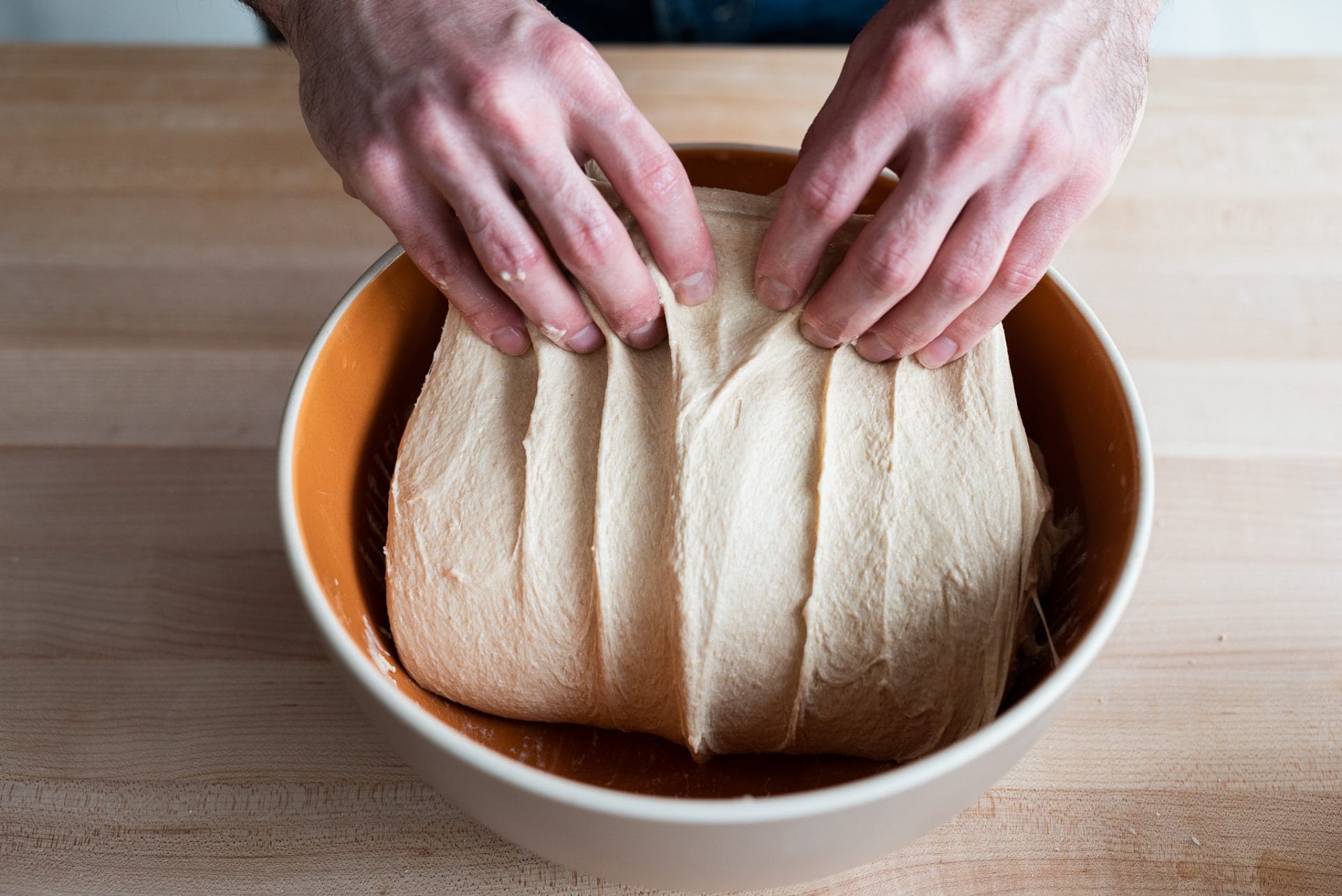

So the purpose is to get the stability proper, to permit for some unfold and growth, however not an excessive amount of. When the dough is first blended, it is shaggy, weak, and falls aside readily (though not as a lot if you happen to autolyse beforehand). After mixing and a few kneading, the dough turns into stronger and might maintain form.
If the dough is not blended or kneaded to full growth (e.g., full windowpane), including in units of stretch and folds throughout bulk fermentation will assist proceed its progress towards a firmer, extra cohesive dough that is in a position to lure gasoline and maintain its form all the way in which to bake time.
First, take a look at stretches and folds and the way to do them.
What Are Stretches and Folds?
Performing stretches and folds is a dough-strengthening approach carried out at a set interval on bread dough throughout bulk fermentation. Every set usually requires 4 stretches and 4 folds, one in every cardinal path (North, South, East, and West). With every fold, the bread dough is strengthened, temperature is equalized, air is integrated, and also you’re given an opportunity to see the way it’s fermenting.
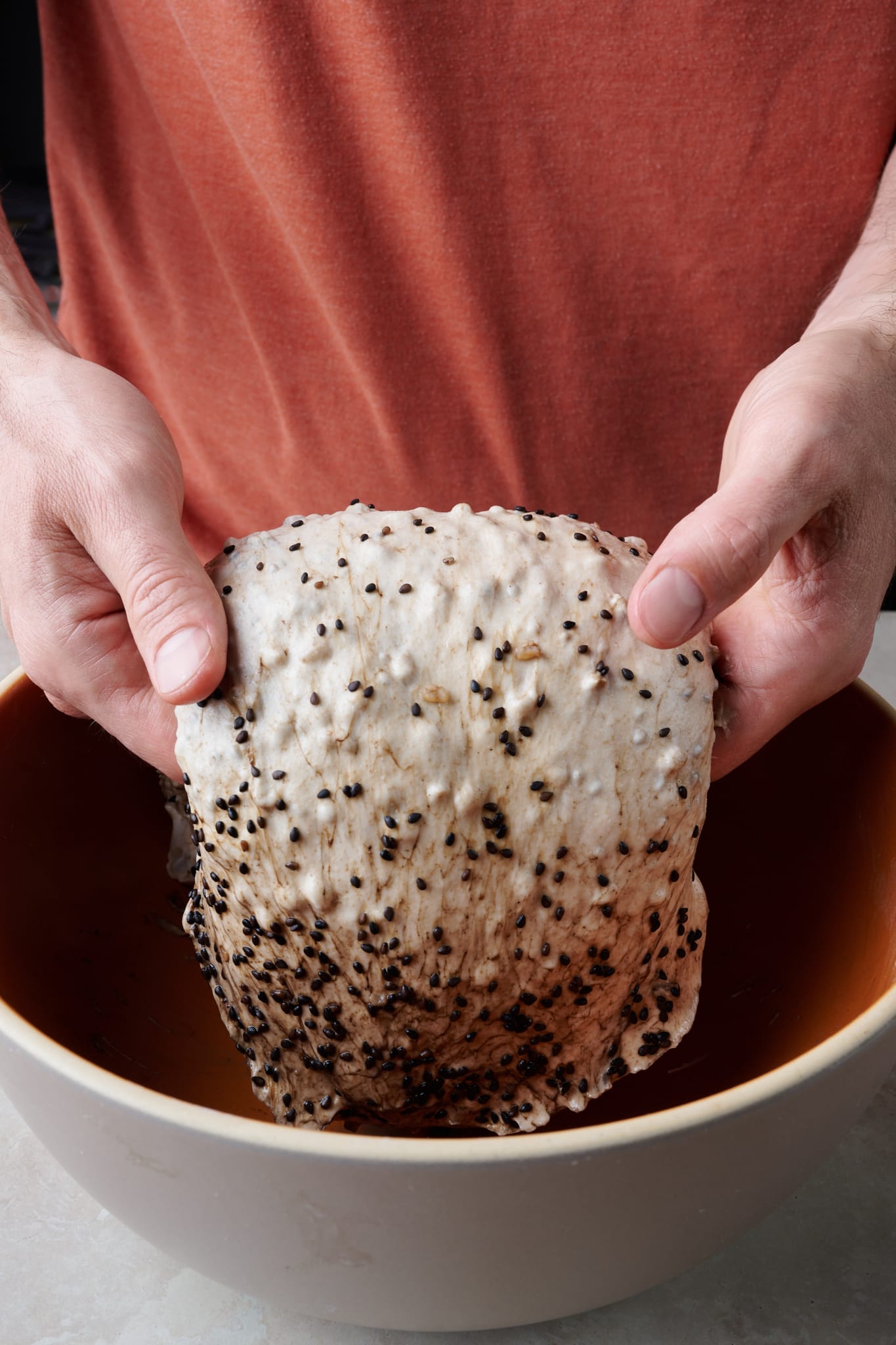

In almost each sourdough bread recipe (and often candy sourdough recipes, too) at this web site, you will discover at the least one set of stretch and folds throughout bulk fermentation.
What Does Stretching and Folding Sourdough Bread Dough Do?
Strengthens the Dough
At first, these units are carried out to strengthen the dough. Stretching the bread dough up and over additional develops the dough’s gluten, bringing elevated elasticity.
In comparison with extra intensive dough strengthening, just like the slap and fold kneading approach, these folds could really feel like they don’t seem to be doing a lot. However in reality, they’re. Even a single set of stretches and folds provides a big quantity of energy to your dough, and the vigor of the stretches and folds additionally performs a job (extra on this later).
Equalizes Dough Temperature
Units of stretches and folds additionally can help you equalize the dough’s temperature. Assume, for instance, a few dough that is sitting on a heat floor; the dough on the backside of the container shall be hotter than the highest, which may imply various fermentation charges all through the dough (as a result of, as we all know, dough temperature is essential in bread baking).
Prompts Checking In With the Dough
Every stretch and fold set permits us to test in with the dough to see the way it’s progressing by way of bulk fermentation. As an alternative of simply letting it sit there for the two to 4-hour bulk fermentation, we’re considerably pressured to look in on the dough, really feel it, and resolve if it is shifting rapidly that day or is just a little sluggish. These little alternatives are invaluable moments to step again and assess the dough.
Incorporates Air
To a lesser diploma, stretches and folds additionally incorporate a small measure of air into the dough at every fold.
The best way to Stretch and Fold Sourdough Bread Dough Throughout Bulk Fermentation
There are lots of methods to carry out the stretching and folding. In the long run, it comes all the way down to choice. Some strategies are higher for rectangular tubs, some with spherical bowls, and others for deep containers. Whereas a lot of the pictures on this submit present my dough in a spherical container, the folding types will even work for a sq. or rectangular tub. When utilizing a dough tub for larger dough quantities (4kg+), I usually go for the “light” folding method within the video under.
I typically carry out two totally different strategies for stretching and folding: a vigorous technique and a mild technique. I select between the 2 primarily based on the dough’s state: a vigorous set is suitable if the dough is weak and slack. If the dough is already sturdy, a mild set will suffice.
After I combine or knead the dough up entrance, I do extra light units than sturdy ones, because the dough is already nicely on its strategy to its ideally suited energy (extra on this later).
Conversely, if I am mixing minimally or making a no-knead sourdough bread recipe, I would go for extra stretching and folding throughout bulk fermentation to successfully strengthen the dough in a a lot simpler method.
Let’s first take a look at the way to carry out a vigorous set of stretches and folds.
Stretches and Folds: Vigorous Methodology
Robust units contain just a little extra stretch of the dough and impart vital energy. But they’re easy, fast, and efficient.
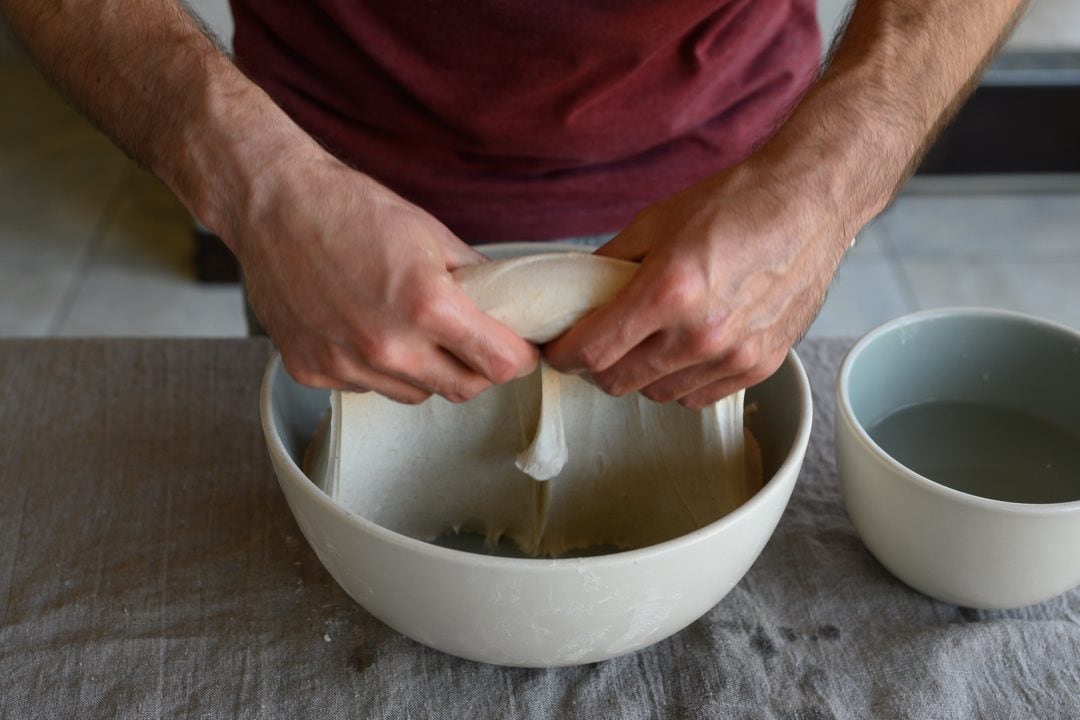

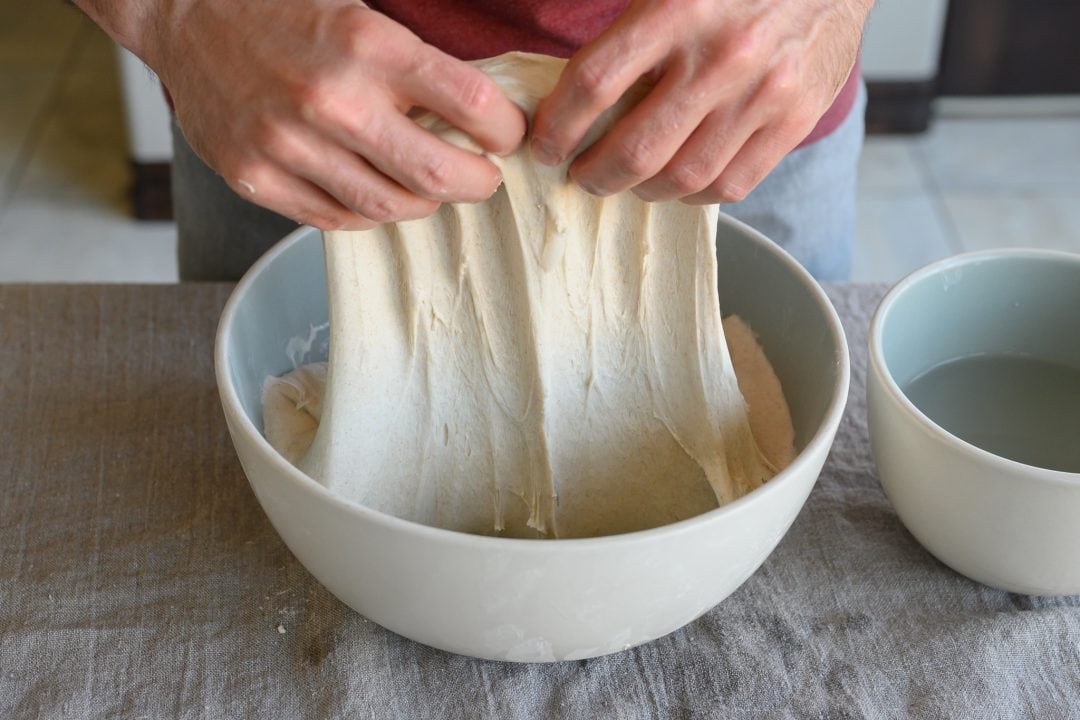

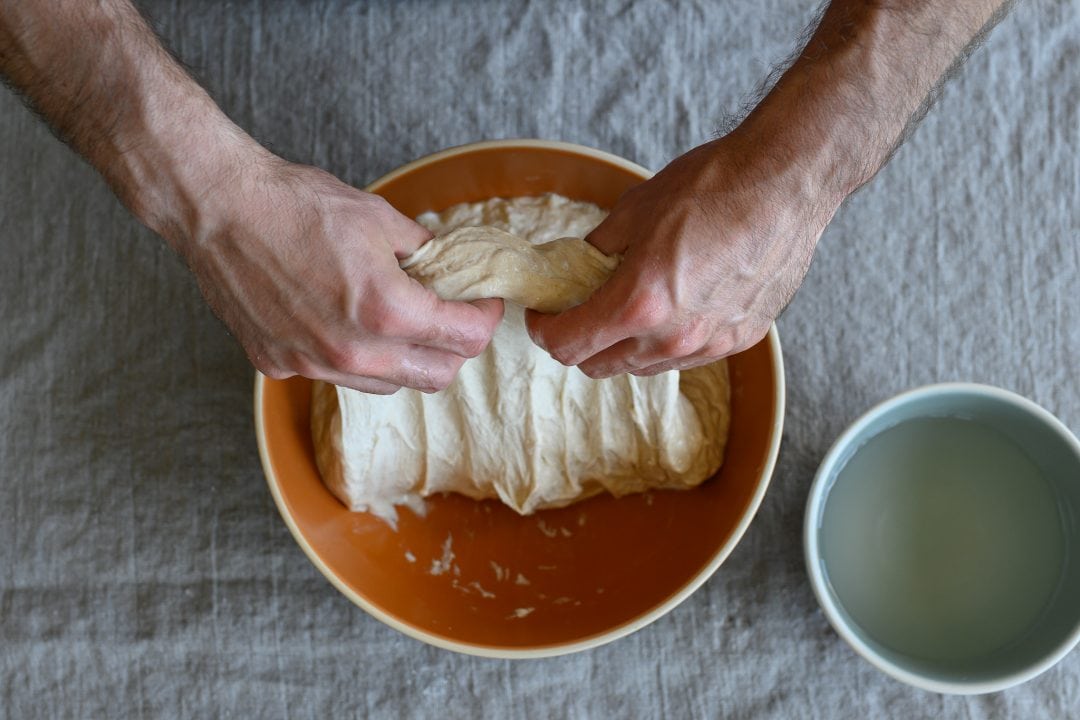



First, I dip my arms in water to make them nonstick.
Then, I take advantage of my moist arms to choose up a aspect of the dough, stretch it, and fold it over. That is one in every of 4 for the set. Subsequent, I rotate the bowl 180° (flip it so that you’re now trying on the reverse aspect you simply folded) and repeat. This ends in a type of tube form within the container. Then, I rotate the bowl 90° and do one other stretch and fold. Lastly, rotate the bowl 180°, do the final stretch, and fold over.
Lastly, you will have a neat bundle folded up within the container. Cowl the dough, set a timer, and wait till the subsequent set.
Stretches and Folds: Mild Methodology
I’ve heard these light stretches and folds known as “coil folds,” however so long as I have been baking, I’ve known as them folding underneath. However the necessary factor is that they’re very light but nonetheless efficient. The dough is already comparatively sturdy earlier than I begin folding, so a mild set is greater than sufficient. In the long run, the dough can be neatly gathered within the container.
As an alternative of stretching the dough up and over to the opposite aspect, you decide up the dough within the center and let the ends fold in underneath itself. I carry out these folds one for either side of the dough.
After Stretching and Folding, Go away the Dough Organized
No matter the way you stretch out and fold your dough, I discover it is at all times helpful to go away the dough gathered up neatly within the bulk fermentation container. This implies the dough has a easy floor on prime with the perimeters tucked in and down.
I discover it is useful to go away the dough neatly gathered up within the bulk fermentation container.
Then, when the dough rises for the rest of the primary rise, the dough cleanly strikes up in a single stable mass as an alternative of getting some sections transfer up at one aspect and a few on the opposite. Cleanly bundled dough lets you assess it higher because it rises throughout bulk fermentation.
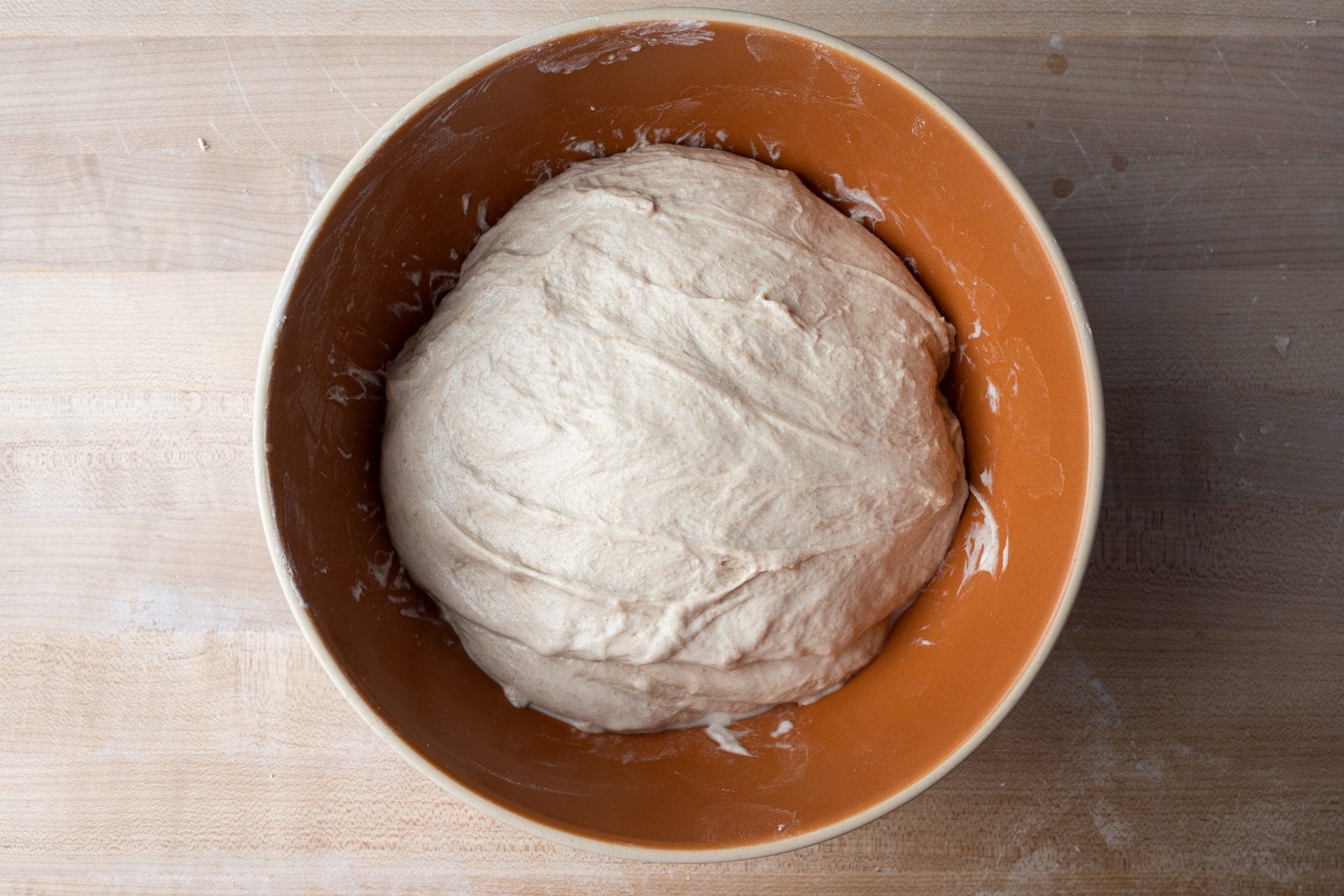

Along with serving to you assess the dough’s fermentation time with regards to dividing it, you are working with a clear, easy prime that divides neatly and is simpler to work with.
How Many Stretches and Folds Ought to I Do?
In the end, the variety of units of stretch and folds will rely on the dough’s composition. If the dough has a excessive share of high-protein white bread flour, the dough’s hydration, and the quantity of levain or starter added—all of those components play a job. These units transfer your dough alongside the spectrum from weak to sturdy, ever nearer to the correct amount of dough energy (which I name the “ideally suited dough energy” under). Some doughs want extra assist to get there; others are sturdy sufficient and want much less assist.
For many dough recipes, I begin with a baseline of three units of stretches and folds. If the dough comes from mixing on the weak aspect, I am going to improve that quantity. I am going to skip stretches and folds if the dough is agency and elastic.
One of the simplest ways I will help visualize that is with the diagram under. I see the dough as at all times shifting from left to proper, beginning as a shaggy, weak mess. As you combine, knead, and strengthen, you rapidly transfer the dough towards the stronger aspect (the arrow’s size under reveals the fast strengthening). Throughout bulk fermentation, every set of stretches and folds (S & F) strikes the dough to the best. As mentioned above, the sturdy units transfer the dough farther, and the light ones transfer barely much less.
Ultimately, your dough reaches the spot the place it is sturdy sufficient, the perfect level at which it might relaxation for the rest of bulk fermentation with out intervention.


What’s the ideally suited dough energy anyway? There is not any ideally suited; that is my imaginary level the place I really feel the dough is robust sufficient. As I am going to talk about quickly, that time depends upon what’s to return for the dough in the remainder of the method. For instance, if you happen to’re preshaping (which provides extra energy to the dough), that ideally suited dough energy dashed line will transfer to the left because it wants much less strengthening later.
Be aware that what’s not proven within the diagram is the strengthening of the dough organically as a result of fermentation. I am selecting to principally ignore that idea as we give attention to mechanical strengthening.
How Lengthy to Wait Between Units of Stretches and Folds
The period of time is not tremendous vital; what is important is the dough state whenever you go to do your stretches and fold. You need the dough to have relaxed outward, presumably spreading to fill your bulk fermentation container.
Contemplate for a second a dough that is been stretched and folded half-hour in the past, however whenever you go to present it one other set, it is nonetheless gathered up within the middle of your bowl, trying sturdy with outlined edges. In the event you tried to present this sturdy dough a stretch and a fold-over, you would be preventing the dough, forcing it to conform. As an alternative, give the dough extra time to relaxation, let the gluten loosen up and develop into extensible once more, after which carry out one other set (if in any respect).
Typically, I like to attend round half-hour between units. Thirty minutes appears the best time for many doughs to loosen up and unfold out within the bulk fermentation container—exactly whenever you need to give it one other set.
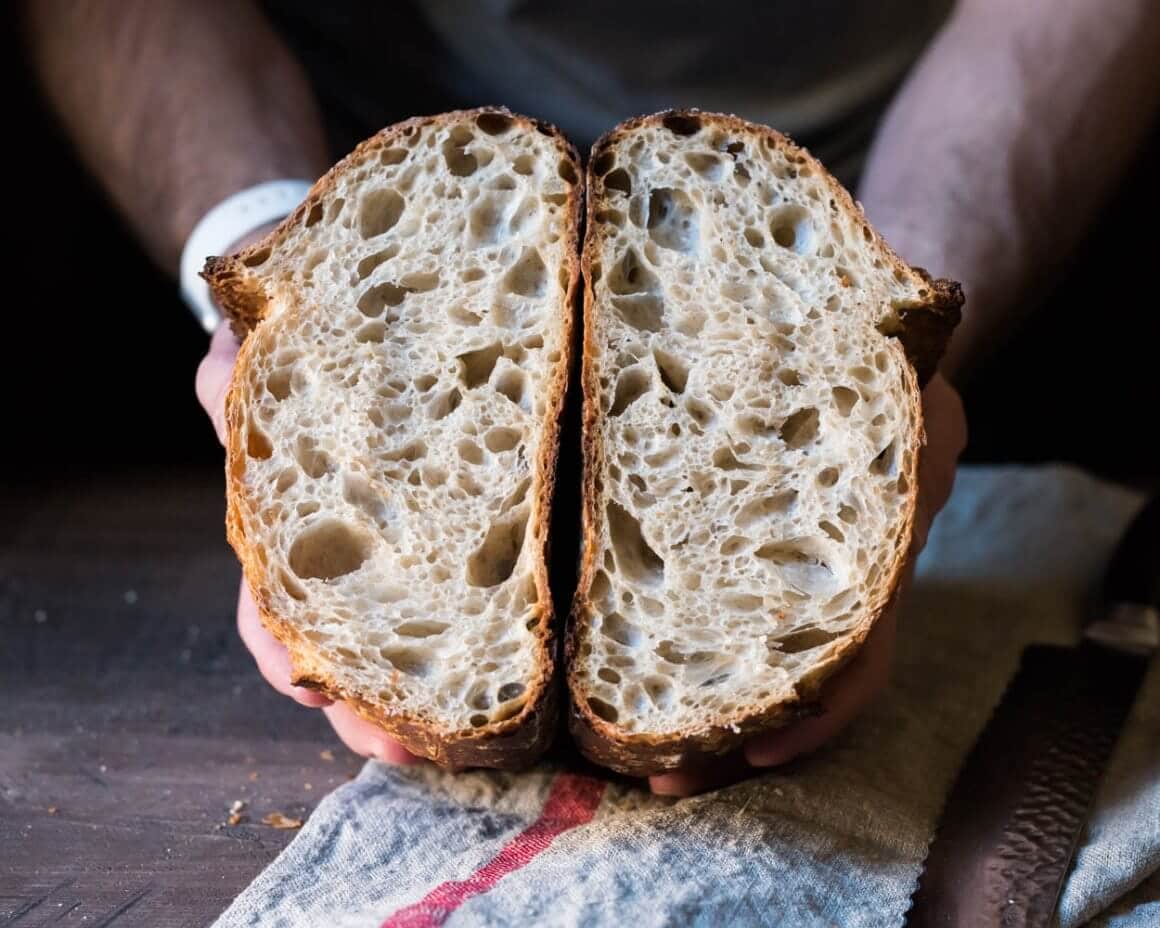

Nonetheless, if you happen to’ve minimally blended or kneaded the dough and the dough could be very slack and weak, you would possibly want solely 10 to fifteen minutes of relaxation between units. On this case, generally I am going to carry out a couple of early units spaced out by quarter-hour, then improve that point later because the dough strengthens.
An incredible instance of this in motion is My Greatest Sourdough Bread recipe (picture at proper), which is a really extremely hydrated dough. Due to the excessive quantity of water added, it is slack and really extensible. On this recipe, I select to present it a number of quick units of stretches and folds—every separated by quarter-hour—firstly of bulk fermentation to strengthen the dough rapidly.
The best way to Know When to Cease Doing Stretches and Folds
This will generally be a tough name to make, and you must think about your total baking course of. You need to think about what else is going on to your dough after bulk fermentation: are you preshaping (in that case, fewer units are wanted)? Do you plan to form the dough calmly or with a heavier hand (extra units and fewer units wanted, respectively)? Is the dough going to be retarded within the fridge in a single day (doubtlessly fewer units because the chilly temperature will deliver energy)?
All of this goes again to the strengthening diagram I confirmed above. In the event you’re shifting that dashed ideally suited dough energy line to the left or proper, you may modify the variety of units required.
Earlier than performing a set, I take advantage of my judgment proper there after which. I ask myself whether or not the dough was blended/kneaded longer than regular, if it has a number of units already, if it has outlined edges and appears gathered up within the bowl, or how I’m dealing with the dough later down the road—all of those assist me assess whether or not I feel the dough wants extra energy.
Let’s check out two examples. First, let us take a look at a weaker dough, one which could be very early in bulk fermentation.


As you may see, the weak dough above nonetheless appears to be like shaggy and sloppy; it does not have adequate construction. It wants a set of stretch and folds (and I might doubtless give it a powerful set).
Alternatively, let us take a look at stronger dough.
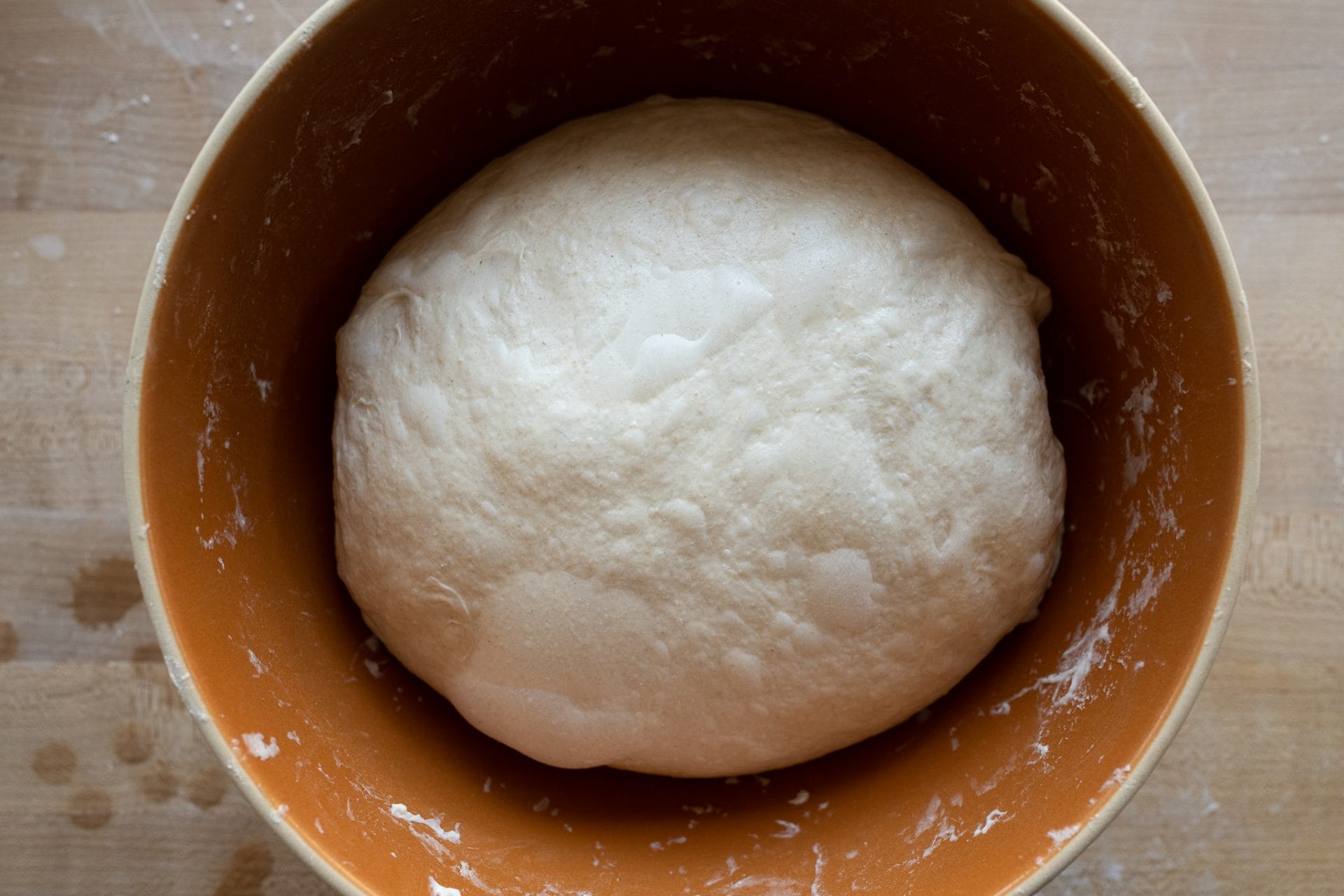

The dough within the picture above appears to be like smoother has outlined edges, and (drastically) domes downward on the edges. You may really feel that it is stronger simply by trying on the picture. If I had already finished a set or two with the above dough, I might go away it to relaxation till divide time1.
How Does the Autolyse Method Impact Stretching and Folding?
In my information to utilizing the autolyse approach, I speak about how performing an autolyse can result in a dough that is already stronger out of the gate. Normally, after I autolyse, I can get away with much less mixing up entrance, and that is the purpose at which I often modify. However once more, dough energy strikes alongside a steady spectrum. If I autolyse and blend for a very long time, I am going to doubtless want a couple of (if any) units of stretch and folds. Alternatively, if I autolyse and blend gently, I would nonetheless want a set or two.
So, all of it relies upon! Having an autolyse does not essentially imply I would like extra or fewer stretch and fold units, but it surely begins the dough at a stronger state.
Do Extra Stretches and Folds Give My Bread an Open Crumb?
I speak about this within the Bread Baker’s Handbook; observe that performing extra units of stretches and folds doesn’t imply you will have bread with a extra open crumb.
…performing extra units of stretches and folds doesn’t imply you will have bread with a extra open crumb.
This can be a frequent false impression, the thought {that a} stronger dough will yield a loaf with a wildly open crumb and open inside. This goes again to what I mentioned to start with: you need to discover that ideally suited dough energy, at which your dough is robust sufficient to lure gasoline and maintain its form however not so sturdy it might’t develop optimally within the oven.
What’s Subsequent?
Remember to learn by way of the information to bulk fermentation, which covers the essential first rise for any bread dough, and that is when stretching and folding occurs.
Subsequent, take a look at my information to proofing bread dough, which would be the baking step proper after you form the dough on the finish of bulk fermentation.
In the event you’re new to baking sourdough bread, take a look at my new baker, begin right here information.







